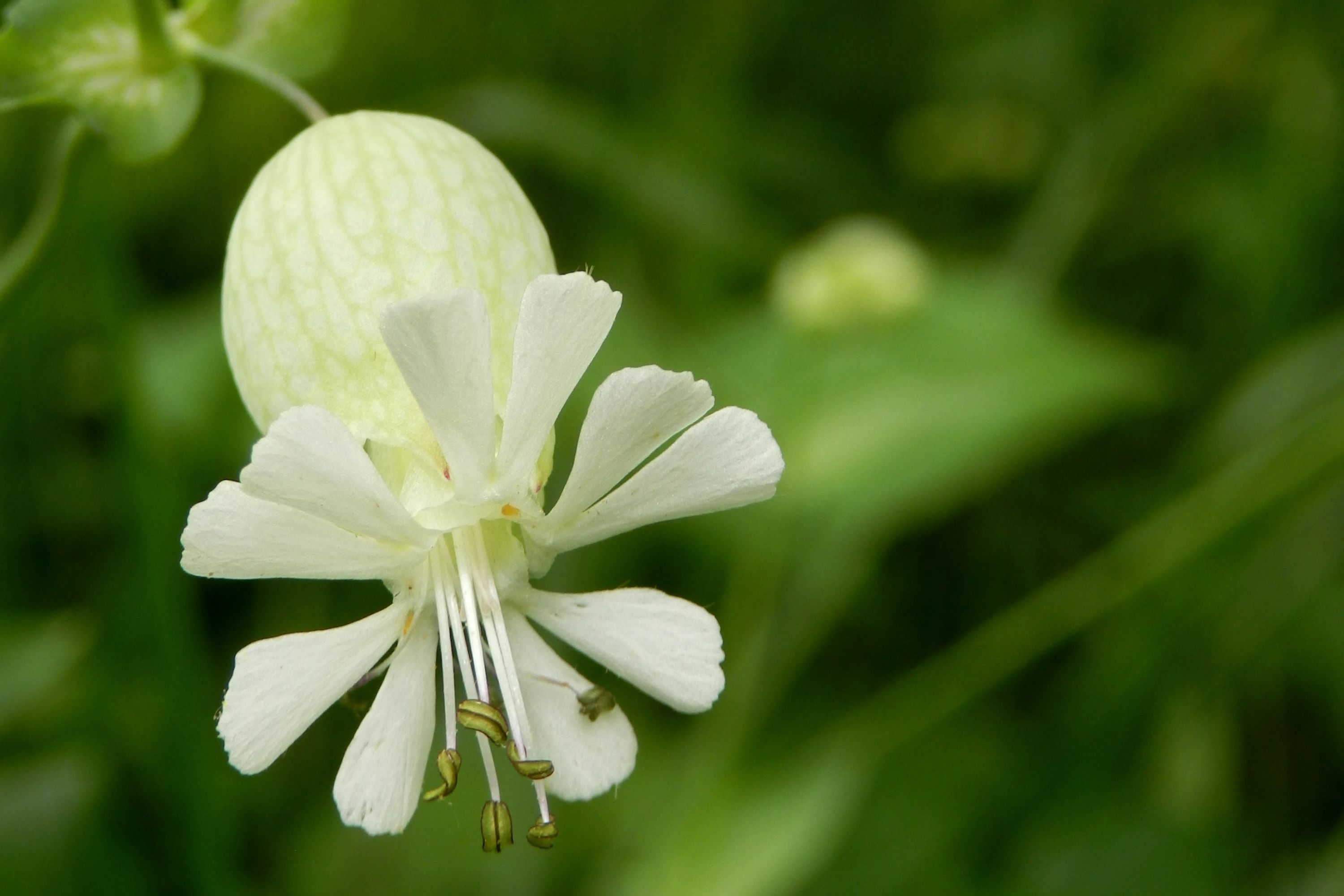Bladder campion
(Silene vulgaris)

Description
Silene vulgaris, also known as the common catchfly, is a herbaceous plant species that belongs to the Caryophyllaceae family. It is native to Europe and western Asia, but it has been introduced to other parts of the world, including North America and Australia. In this article, we will explore the various aspects of Silene vulgaris, including its physical characteristics, habitat, distribution, life cycle, uses, and potential hazards. Physical Characteristics Silene vulgaris is a biennial or perennial herb that can grow up to 60 cm in height. It has a taproot system with fibrous roots that extend horizontally. The stem of the plant is erect, branching, and hairy, and it bears opposite leaves that are lanceolate or oblong in shape, with pointed tips and entire margins. The leaves are also hairy, especially on the underside. The flowers of Silene vulgaris are borne in clusters at the top of the stem, and they are hermaphrodite, meaning they have both male and female reproductive organs. The flowers are typically pink or purple, but they can also be white or red. They have five petals that are deeply lobed, giving them a fringed appearance. The flowers are also surrounded by a calyx, which is a green or reddish structure that protects the developing fruit. Habitat and Distribution Silene vulgaris is a common plant species that can be found in a wide range of habitats, including grasslands, meadows, roadsides, wastelands, and cultivated fields. It prefers well-drained soils that are rich in nutrients, but it can also grow in poor soils. It can tolerate a wide range of temperatures and moisture conditions, from cool and wet to warm and dry. Silene vulgaris is native to Europe and western Asia, where it is widely distributed. It has also been introduced to other parts of the world, including North America, Australia, and New Zealand. In some regions, it is considered an invasive species because it can compete with native plants and disrupt local ecosystems. Life Cycle Silene vulgaris has a complex life cycle that involves both sexual and asexual reproduction. It is a short-day plant, which means that it requires a period of darkness that is longer than its period of light in order to flower. The plant can reproduce sexually by producing seeds, which are dispersed by wind, water, or animals. Silene vulgaris can also reproduce asexually by forming vegetative shoots from its roots. These shoots can grow into new plants that are genetically identical to the parent plant. This mode of reproduction allows Silene vulgaris to rapidly colonize new areas and outcompete other plant species. Uses Silene vulgaris has a number of uses in traditional medicine, as well as in horticulture and agriculture. The plant contains saponins, which are compounds that have been shown to have anti-inflammatory, analgesic, and antifungal properties. It has also been used to treat respiratory infections, digestive disorders, and skin irritations. In horticulture, Silene vulgaris is valued for its ornamental value. It is often grown in gardens and flower beds, where its bright pink or purple flowers add a splash of color. It is also used as a cut flower in floral arrangements. In agriculture, Silene vulgaris is considered a weed in some regions, where it can compete with crops for nutrients and water. However, it has also been shown to have some beneficial effects on soil health. For example, the plant can help to control erosion, improve soil structure, and increase soil fertility. Potential Hazards Silene vulgaris, like many plant species, contains compounds that can be toxic to certain animals if ingested in large quantities. In particular, the plant contains saponins, which are natural detergents that can cause irritation and inflammation in the digestive system of animals. While Silene vulgaris is not considered toxic to humans, it can be harmful to livestock, particularly sheep and cattle. Grazing animals that consume large amounts of the plant can develop a condition called "saponin poisoning," which is characterized by symptoms such as diarrhea, vomiting, abdominal pain, and dehydration. In addition to its potential toxicity to animals, Silene vulgaris can also have ecological impacts as an invasive species. When introduced to new areas, it can outcompete native plants and disrupt local ecosystems. This can have cascading effects on other plant and animal species, potentially leading to biodiversity loss and ecosystem degradation.
Taxonomic tree:







